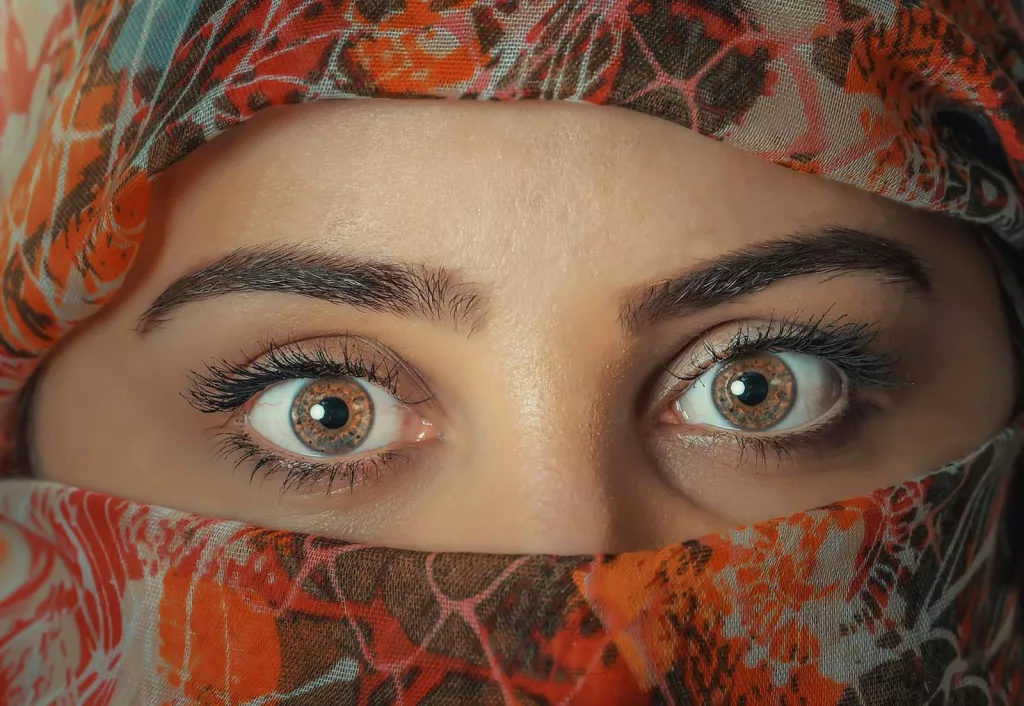The Fascinating Role of Eyebrows: Evolutionary Roots and Functional Benefits

Eyebrows are a prominent and defining feature of the human face. Beyond their role in aesthetic beauty, they serve as one of the key elements of facial expression and recognition. While we may not often think about the purpose of eyebrows, they are far more than just a frame for our eyes. Eyebrows have essential evolutionary and functional significance that has allowed humans to adapt and thrive in diverse environments. From protecting our eyes to enhancing communication, eyebrows are a fascinating aspect of our anatomy that serves multiple roles.
Eyebrows have intrigued anthropologists, biologists, and psychologists for years. Research into the evolutionary history of eyebrows provides insight into their functions, as well as why they have remained a stable feature in human development while other facial hair has diminished or changed. This article will delve into the evolutionary roots of eyebrows, their practical functions in human life, and the role they play in nonverbal communication, recognition, and social interaction.
The Evolutionary Origins of Eyebrows
Why Humans Retain Eyebrows Despite Losing Most Facial Hair
Humans are unique among primates in having relatively sparse body hair, yet we have retained thick and prominent eyebrows. The evolutionary history of eyebrow development is linked to our transition from a heavily furred ancestor to a species that relies on skin and specialized hair for different functions. For early humans, having hairless skin was advantageous for thermoregulation and cooling, particularly as our ancestors moved into warmer, open environments.
However, eyebrows and other facial hair provided benefits that made them worth retaining, especially as humans evolved to live in a wide range of climates. Eyebrows’ strategic position above the eyes and their ability to grow densely allowed them to fulfill unique protective and communicative roles that became increasingly important as human facial expressions evolved.
One of the key theories suggests that eyebrows became an evolutionary asset because they contribute to facial communication and recognition. Humans use facial expressions extensively for nonverbal communication, and eyebrows enhance the visibility of these expressions, making communication more effective. From an evolutionary perspective, the ability to communicate and convey emotions through facial expressions would have strengthened social bonds and cooperation, which are crucial for survival in groups.
The Role of Eyebrows in the Evolution of Human Expression
As humans evolved to rely more on communication and social structures, facial expressions became one of the primary ways to convey emotions, intentions, and even warnings. Eyebrows play a unique role in accentuating these expressions, providing clear visual cues that are easily understood within social groups.
The flexibility of eyebrows allows them to move in specific ways that signify different emotions. Raised eyebrows, for example, can signify surprise or curiosity, while furrowed eyebrows can indicate confusion, anger, or focus. This range of movement gives humans the ability to communicate nonverbally, which was especially valuable before the development of complex language.
Facial expressions—enhanced by eyebrow movements—allowed early humans to build more sophisticated social networks, increase cooperation, and enhance survival chances. By keeping eyebrows, humans retained a feature that helped facilitate effective communication, an essential element of social cohesion and group survival.
The Practical, Protective Functions of Eyebrows
Shielding the Eyes from Moisture
One of the most practical functions of eyebrows is to protect the eyes from moisture. Positioned above the eyes, eyebrows act as a natural shield, preventing sweat, rain, and other forms of moisture from running directly into the eyes. Sweat produced by the forehead during physical activity or high temperatures can be irritating to the eyes and may blur vision. The downward angle and arch of the eyebrow hairs help divert sweat and water toward the sides of the face, away from the eyes, keeping our vision clear.
This function would have been particularly beneficial for early humans who engaged in physically demanding activities, such as hunting or gathering, especially in hot or rainy environments. By keeping moisture out of the eyes, eyebrows help humans maintain clearer vision, reducing the risk of accidents and allowing for better performance in tasks that require keen eyesight.
Blocking Sunlight and Filtering Debris
In addition to diverting moisture, eyebrows serve as a barrier against sunlight and debris. Although they cannot block sunlight entirely, eyebrows help to shield the eyes from direct sunlight, reducing glare and making it easier to focus on tasks in bright conditions. This slight protection from glare allows humans to function more effectively outdoors, whether navigating landscapes, hunting, or gathering resources.
Eyebrows also help filter out dust, dirt, and other airborne particles that might otherwise reach the eyes, particularly in windy or dusty environments. Even in modern settings, eyebrows serve as a line of defense, preventing particles from entering the eyes and reducing irritation. This protective role is invaluable, as our eyes are highly sensitive organs that require clear, unobstructed vision for tasks ranging from daily activities to intricate work.
Eyebrows and Communication: The Role of Eyebrows in Expressing Emotions
Enhancing Facial Expressions for Social Interaction
Eyebrows play an essential role in expressing and enhancing facial expressions. Movements of the eyebrows communicate emotions like surprise, anger, happiness, and sadness, allowing us to convey complex emotions quickly and effectively without words. These nonverbal cues are crucial for human social interactions, as they help others understand our mood, intentions, and responses in a given situation.
In fact, studies have shown that eyebrows are among the most expressive parts of the human face. For instance, raising the eyebrows can indicate curiosity or surprise, while drawing them together suggests confusion, concentration, or anger. In social interactions, these small, subtle movements help others interpret our emotions and adjust their responses accordingly.
Eyebrows and Trustworthiness
Recent research suggests that eyebrows contribute significantly to how trustworthy or approachable a person appears. Thick, prominent eyebrows, for example, can make facial expressions appear more intense, while subtle, controlled movements can make someone appear calmer or more approachable. Studies show that people often judge others’ emotions based on eyebrow movement, which influences perceptions of trustworthiness, empathy, and emotional state.
The link between eyebrows and perceived trustworthiness is also evident in how individuals with specific eyebrow shapes are often associated with certain traits. For example, more angular, sharply arched eyebrows may be perceived as conveying confidence, while gently curved or rounded eyebrows are often associated with friendliness. These associations may be culturally influenced but are rooted in the role of eyebrows in shaping and enhancing expressions.
Recognizing Faces: How Eyebrows Aid in Face Recognition
Eyebrows are critical for facial recognition, a skill that is essential for social interactions. Research conducted by MIT neuroscientists has shown that eyebrows are even more important than eyes for identifying faces. In one study, participants were more likely to recognize famous faces when they retained their eyebrows than when they retained their eyes. This finding suggests that eyebrows play a significant role in facial recognition, helping us differentiate one person from another based on subtle variations in eyebrow shape, thickness, and position.
Eyebrows also contribute to our sense of individuality, as their shape, color, and texture vary from person to person. This diversity in eyebrow characteristics aids in identifying others and remembering them, reinforcing social bonds by making it easier to distinguish individuals within a community.
Eyebrows and Human Evolutionary Adaptations to Environment
Adaptations to Climate and Environmental Conditions
Human populations have adapted to various environments over thousands of years, and eyebrows have played a role in helping people survive in different climates. For instance, thicker, more prominent eyebrows may be advantageous in sunny or harsh environments, providing additional shade and helping to reduce glare. In colder climates, eyebrow thickness may help trap warmth near the eyes, protecting them from the cold.
Evolutionary adaptations, along with genetic diversity, have led to variation in eyebrow thickness, shape, and density across populations. Individuals living in environments with high levels of sunlight, for instance, may develop darker and denser eyebrow hair, while those in cooler climates may have lighter, less dense brows. These adaptations provide further evidence of the functional importance of eyebrows in helping humans thrive in a variety of environmental conditions.
Eyebrow Asymmetry and Health Indicators
Some research suggests that eyebrow symmetry may be an indicator of overall health, genetic fitness, or even immune function. Symmetrical facial features, including eyebrows, are often associated with genetic health and are considered more attractive across many cultures. This perception may be rooted in evolutionary biology, as symmetry is often associated with physical health and genetic stability.
Asymmetrical eyebrows, while often natural and common, may be more noticeable in individuals experiencing stress or illness, as facial asymmetry can increase when the body is under strain. This connection between eyebrow symmetry and health highlights the role of eyebrows in nonverbal communication, as they can subtly indicate a person’s physical and emotional well-being.
Eyebrow Grooming and Cultural Significance
The Cultural Evolution of Eyebrow Grooming
Throughout history, eyebrows have held cultural significance and have been groomed, styled, and altered to fit societal standards of beauty and identity. Different cultures have emphasized various eyebrow shapes and thicknesses, seeing them as symbols of beauty, status, or even spirituality.
In ancient Egypt, for example, eyebrows were accentuated with dark pigment to create a bold appearance, signifying beauty and power. In medieval Japan, noblewomen often shaved their eyebrows and drew them higher on the forehead to reflect status and elegance. Today, eyebrow grooming practices such as tweezing, waxing, and microblading have become common as people seek to shape their eyebrows in ways that reflect personal style and cultural beauty standards.
The act of grooming eyebrows is more than a trend; it reflects deeper social and psychological aspects of self-expression. Grooming allows individuals to control how they are perceived by others and communicate aspects of their personality, status, or belonging within a certain group.
Psychological Impact of Eyebrows on Self-Perception
For many people, eyebrows are an essential part of their self-image, and changes in eyebrow appearance can have a significant impact on self-perception and confidence. The practice of enhancing or shaping eyebrows can help individuals feel more attractive or aligned with beauty ideals. Eyebrows are, therefore, an integral part of our social presentation, helping us feel confident and allowing us to express aspects of our identity through appearance.
Eyebrow trends and the emphasis on grooming underscore the psychological and social importance of eyebrows in human culture. The way we perceive our own eyebrows, and the way they are perceived by others, can influence our self-esteem and social interactions.
Conclusion: Eyebrows as a Multifunctional Feature
Eyebrows are much more than just a facial feature; they are a unique aspect of human anatomy that serves practical, evolutionary, and social purposes. From protecting the eyes from moisture and sunlight to enhancing communication through facial expressions, eyebrows play an essential role in our daily lives. Their significance extends beyond basic functionality, influencing how we recognize, communicate, and connect with others.
The evolutionary journey of eyebrows has been shaped by the need for protection, the drive for social communication, and the development of cultural identity. Understanding the multiple roles of eyebrows helps us appreciate their contribution to our appearance, health, and social interactions. Whether viewed through the lens of biology, psychology, or cultural history, eyebrows remain a defining feature that helps us navigate and connect with the world around us.


